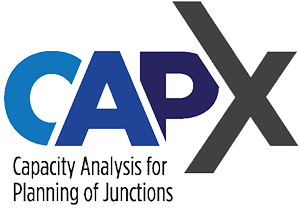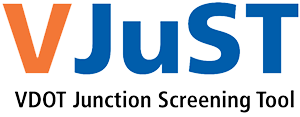|
Page Content
To assist with the complex calculations involved in the application of the HSM, AASHTO, FHWA, and NCHRP have developed a selection of tools. These tools are designed to be used with specific parts and chapter of the manual, as outlined below. PART B – Roadway Safety Management Process | The HSM Part B focuses on Roadway Safety Management Process. AASHTOWare Safety Analyst™ was developed to support states’ efforts to identify and manage a systemwide program of site-specific improvements to enhance highway safety by cost-effective means. Once setup and prepared with state-specific data, the software automates procedures to assist highway agencies in implementing the six main steps of the highway safety management process (supporting FHWA’s HSIP requirements and procedures), including: network screening, diagnosis, countermeasure selection, economic appraisal, priority ranking, and countermeasure evaluation. Additional enhancements have been included to conduct systemic network screening as well as many system summary reports. |  | The Safety Performance for Intersection Control Evaluation (SPICE) Tool is intended to aid in the determination of a preferred alternative for a given intersection project by providing an objective, quantifiable basis to compare the safety performance of different intersection types. This tool may be of use to traffic safety researchers and practitioners, transportation planners and engineers, and highway and street designers. This document provides information and guidance on how to use the SPICE Tool, a macro-based, Microsoft Excel spreadsheet, to assess the safety performance of a variety of intersection geometry and control scenarios in terms of predicted crash frequency and severity. |  | The Capacity Analysis for Planning of Junctions (CAP-X) Tool is intended to aid in the determination of a preferred alternative for a given intersection project by providing an objective, quantifiable basis to compare the operational performance of different intersection types. This tool may be of use to transportation planners, transportation engineers, and highway and street designers. This document provides information and guidance on how to use the CAP-X Tool, a macro-based, Microsoft Excel spreadsheet, to assess the operational performance of a variety of intersection geometry and control scenarios in terms of volume to capacity ratio and multimodal accommodations. |  | The intent of VJuST tool is to help in the decision-making process of identifying the most appropriate intersection and interchange types to advance to further study, analysis and design. This tool helps to identify innovative intersection and interchange configurations that have the potential for reducing congestion and improving safety. Congestion results are based on user inputs such as turning movement volumes, number of lanes and lane configurations, while safety results are based on conflict points. Results from the tool are not meant to replicate results obtained from more detailed traffic operations, safety and design analyses. This tool is most applicable at isolated intersections or interchanges and does not account for the influence of adjacent intersections on traffic patterns; however, the results may be indicative of how an intersection or interchange within a corridor might operate. |
PART C – Predictive Method | The HSM Part C provides a predictive method for estimating expected average crash frequencies at individual sites. This method relies on safety performance functions (SPF) that estimate predicted average crash frequency as a function of traffic volume and roadway characteristics (e.g., number of lanes, median type, intersection control, number of approach legs). To support the use of the HSM predictive methods, FHWA has developed a freely available software program called the Interactive Highway Safety Design Model (IHSDM). IHSDM’s crash prediction module (CPM) – which incorporates the latest analytical methods included in Part C including the freeway analysis supplement. It can be used to: - Predict crash frequency for highway segments, intersections, and interchanges;
- Evaluate the safety effects of highway improvements and treatments;
- Compare relative safety performance of design alternatives; and
- Assess the safety and cost-effectiveness of design decisions.
IHSDM contains five additional modules: Design Consistency, Intersection Review, Policy Review, Traffic Analysis, and Driver/Vehicle. |  | HSM Spreadsheet ToolsIn addition to IHSDM, NCHRP research studies have developed a number of spreadsheet tools which assist with the implementation of HSM Part C predictive methods. Primarily, there are spreadsheets for the rural roadways and urban arterial segments and intersections and for freeway segments and interchange elements. The non-freeway spreadsheets are named for the chapters: rural two-lane two-way roads (HSM Chapter 10), rural multilane highways (HSM Chapter 11), and urban and suburban arterials (HSM Chapter 12). The Enhanced Interchange Safety Analysis Tool (ISATe) are for freeway segments and speed-change lanes (HSM Chapter 18) and ramps and ramp terminals (HSM Chapter 19). These tools are maintained by AASHTO and undergo occasional updates and improvements. Please check back periodically to ensure that you are using the most up-to-date version for all predictive crash analyses. Version notes: Updates were made to the Urban and Suburban Arterials spreadsheet in April, 2020, removing redundant application of calibration factors in segment and intersection models when calculating pedestrian and bicycle crash frequencies. Updates were made to the Rural Two-Lane Roads, Rural Multilane Highways, and Urban and Suburban Arterials spreadsheets in July 2019, addressing comments by the AASHTO Highway Safety Manual Steering Group, making minor improvements to formatting and reporting structure for ease of use, and modifying instructional text for improved clarity and consistency. Modified HSM Spreadsheet Tools Several agencies have taken the Part C Spreadsheet Tools and have modified and expanded them to better suit their specific needs through automation, increased flexibility, or additional features. Though these modified spreadsheets are not designed for general use, they may be a useful resource for agencies looking to make similar modifications. NCHRP Crash Prediction ToolsThe following NCHRP research reports have created supplemental crash prediction tools to assist in implementing research findings. It should be noted that these procedures and findings may be refined and/or modified as part of the ongoing effort toward future editions of the Highway Safety Manual. The supplemental tools are linked below the research report unless otherwise specified. |
PART D – Crash Modification Factors | Crash Modification Factors (CMFs) quantify the expected change in average crash frequency as a result of geometric or operational modifications to a site that differs from set base conditions. The Crash Modification Factor Clearinghouse currently houses over 3,500 CMFs. The CMFs that meet the HSM inclusion criteria are identified as such in the Clearinghouse. Many state DOTs have developed a listing of the preferred CMFs for use on projects within their jurisdiction. Several state examples are provided in the Clearinghouse, but users should contact the DOT safety engineer for guidance on appropriate CMFs for use on projects in their jurisdiction. |
|
|
